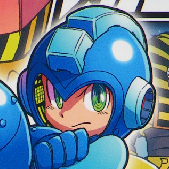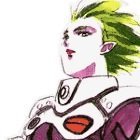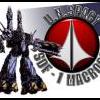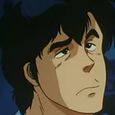-
Posts
12541 -
Joined
-
Last visited
About Seto Kaiba
- Currently Viewing Topic: Mospeada
- Birthday August 22
Contact Methods
-
Website URL
http://www.Macross2.net/m3/m3.html
-
ICQ
0
-
Skype
MacrossMike
Profile Information
-
Gender
Male
-
Location
Lagrange Terrace (a stable community)
-
Interests
Anime (duh), Antique Firearms, Cryptography, Mechanical Design
Seto Kaiba's Achievements

Super Dimension Member (14/15)
2.9k
Reputation
-
"Subs vs. dubs" is an argument for the ages, but the reality of the situation is that subs-only is the norm for new anime releases on streaming. The profit margin on anime is razor thin. Dubbing is expensive, and as often as not dubs are poorly received and harshly criticized for quality issues particularly related to casting. Music-heavy anime gets hit with the latter twice as hard, since the choice is between getting reamed over casting decisions thanks to the switching of languages highlighting any sub-optimal casting choices or paying a princely sum to re-record the music. Since the enthusiast community leans heavy subs anyway, a lot of distributors seem to prefer doing subs first to get the series on streaming ASAP and coming back to get the dub on a second pass if and only if the series is well-received. ... you mean you don't? 😵💫 I know I do.
-
I don't think there's one answer that covers all conditions there. Booster rockets do technically increase the maximum thrust a Valkyrie can produce, but that's not really the point of them. 1st, 2nd, and 3rd Generation Variable Fighters used booster rockets not to increase their maximum thrust but to extend their operating time in space. Earth's initial thermonuclear reaction turbine engine design was incredibly efficient in atmosphere but had very poor propellant efficiency in space. Many of those early designs were also quite small, so their internal fuel tanks did not hold much. This shortcoming was addressed via the introduction of the FAST Pack (known by various configuration-specific nicknames like the "Super Pack", "Strike Pack", etc.). By adding external tanks that greatly increased the amount of fuel the Valkyrie could carry and adding booster rockets to reduce the need to use main engine thrust in maneuvering, the maximum operating time these Valkyries had in space flight was greatly extended. Weapons were added to the boosters and fuel tanks as well, to improve their tactical utility. The 4th and 5th Generations of Variable Fighter introduced new engine technologies that were far more fuel efficient and powerful. Initially, this meant that booster rockets and large external fuel tanks were no longer necessary to achieve satisfactory operating times in space flight and Valkyries could be stealthier without that extra equipment. Then a new possibility presented itself: the now-unnecessary booster rockets could be used to offset the mass of large amounts of additional armor and weaponry. The concept of the FAST Pack changed from extending operating time in space to maximizing armor and armament with the least possible degradation to acceleration and maneuverability. The original case of adding a drone to a Valkyrie to enhance its performance was the VF-0's improvised Special Attack specification from Macross Zero. A stripped-down QF-2200 Ghost was used as a booster and the significant increase in thrust was enough to improve the VF-0's maneuverability in a dogfight while also extending its very limited range. The idea of attaching a drone to a Valkyrie as a performance enhancement made a bit of a comeback in the late 2050s and 2060s, but its usefulness is debatable. The VF-27 had a modified QF-5100D that it used as a booster system and potentially operate remotely as a "loyal wingman" type drone. It didn't improve the VF-27's acceleration, but it did help both its armament and its maneuverability. The Sv-262 also used drones that way, though the improvement in maneuverability that comes from using them as thrust vectoring nozzles and the modest improvement in armament that comes from their built-in weapons and ability to operate in support of their mothership takes a back seat to their main purpose: being glorified drop tanks supplementing the Sv-262's woefully inadequate internal fuel tanks. The Super Ghost used with the VF-31AX can be used the same way, though since its performance is unknown it's not clear how much benefit it actually offers.
-
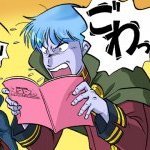
Gundam Show Thread - MSG thru Witch from Mercury
Seto Kaiba replied to Black Valkyrie's topic in Anime or Science Fiction
Yeah, I'm pretty tired of the UC being the One Year War and not much else. Trying to make the Principality sympathetic is, as I've said before, a massive uphill battle in its own right considering the war crimes they're guilty of.- 3518 replies
-
- gundam
- mobile suit gundam
- (and 17 more)
-

Gundam Show Thread - MSG thru Witch from Mercury
Seto Kaiba replied to Black Valkyrie's topic in Anime or Science Fiction
Well, that's definitely looking more like the kind of mook horror show you'd expect for a Zeon-centric story set during Operation Odessa. Looks like they're drawing more than a bit on [i]08th MS Team[/i]... I'm pretty sure there was a copy of Norris Packard's MS-07B-3 Gouf in there, and I guess that explains why the Gundam looks like a variation on the Ez8.- 3518 replies
-
- gundam
- mobile suit gundam
- (and 17 more)
-

The Acolyte - Disney Plus Star Wars Series
Seto Kaiba replied to jvmacross's topic in Anime or Science Fiction
I think you may be conflating two different topics there, TBH. As noted a few posts back, the industry is collectively still trying to figure out what metrics to use to define "success" in the direct-to-streaming market. Increases in subscribers was a metric tossed around early on, but that proved to be a bit useless since it assumed the potential for infinite growth and that people would buy into a service for one series only. Total hours viewed is one popular metric, but most services keep those numbers to themselves and third-party analysis is dependent on self-reporting or data reported to those third-party services. "Engagement", which ScreenRant talked about in several of their articles about The Acolyte's performance relative to other Star Wars shows, tries to measure success via social media interaction. Its usefulness is debatable at best because filtering out bot activity (both malicious and otherwise) is not an exact science and because it treats negative attention engagement (people getting online to talk about how a series sucks) as being the same as positive engagement. Financial performance... well... that's objectively trackable because the companies that produce and release these shows and the merchandise for them are publicly traded and therefore issue regular (quarterly) earnings reports to shareholders disclosing the financial condition of the company and its various operating divisions. Disney's chalked up a billion dollars in profit from the Star Wars movies they've made and that's just the ticket sales, that number doesn't home video, merchandise, attractions, etc. As of March last, they were reporting total Star Wars revenues of about $12 billion since acquiring the franchise, excl. certain separated income streams like attractions. Hasbro has similarly indicated that Disney Star Wars has been doing quite well, and even credited it with getting them through several years of otherwise slow business. Star Wars demonstrably continues to be quite profitable despite the discontent of some long-time fans. A 290% ROI on an acquisition like that is nothing to sneeze at. If they had not bungled the sequel trilogy it probably could've been a lot more, but it's still making huge amounts of money. If they're still posting a profit on what they do make and sell, it's still making money. And as discussed some weeks back, quite a bit of this has more mundane explanations like overzealous ordering and market saturation. (And of course, a number of these titles are being marketed to the more mature audience anyway which isn't going to drive toy sales to kids.) Doesn't seem to have stopped them from developing merchandise... I can see preorders for "Retro Collection" and "Black Series" figures of the characters, a replica of Smilo Ren's helmet, character lightsabers, funko pops, spinoff comics, posters, apparel, etc. -

Super Macross Mecha Fun Time Discussion Thread!
Seto Kaiba replied to Valkyrie Driver's topic in Movies and TV Series
It'd be nice, for sure. It'd save me a lot of effort too. For a pro translator, each of those Master File books would be a $26,000 full-time-for-a-calendar-quarter undertaking. My one saving grace is that my workload is finally starting to return to pre-pandemic levels, so I can do more with them now.) That said, I'm not holding my breath for it. Bandai Namco's Gundam franchise is already well-established internationally and I don't believe they've released any of their equivalent technical books (e.g. Master Archive Mobile Suit) outside of Japan and maybe China. -

The Acolyte - Disney Plus Star Wars Series
Seto Kaiba replied to jvmacross's topic in Anime or Science Fiction
While that certainly is no hot take, things like "well written", "well thought out", "well acted", and "well produced" are all qualitative judgments and therefore subjective. This is the problem I see with almost every argument against Disney Star Wars. People say that they need to objectively do better in an aspect of the creative process which is judged almost entirely in subjective terms. It's a nonsense argument on the face of it. There are some low level objective criteria for things like "well written", but they are very basic and only really serve to separate the completely incoherent from everything else. The kind of basic rules of storytelling that you would learn in an introduction to creative writing class... and those rules are not even the same for every genre, or every period of history. Fans are going to do that anyway. Analyzing all of the little details is just something fans do. "Good" is subjective. I'm sure Disney understands very well that the foundation of their project needs to be something that audiences will enjoy. They've been in this industry far too long to not have a very good grasp of that very simple reality of the arts. The very basic reality that this argument trips over is that "Good" is wholly subjective. It's entirely possible for two people to look at exactly the same thing and have two different qualitative opinions of how good it is. Disney surely thought that the story they had come up with for the sequel trilogy was going to be something that the vast majority of their audience would say was good. They misjudged what the audience wanted. I'm sure that the creators of The Acolyte believed they were bringing a good show to TV. The majority of the audience didn't agree, but there is a dissenting minority who think the show is good and because that qualitative assessment is inherently subjective neither side is wrong. What Disney has failed to do with Star Wars is to understand its audience well enough to properly judge what the audience will consider "good". It does not help that the audience they are trying to understand is so huge that there is no general consensus to be had. I'm not going to get into anything that wanders into Godwin's second law territory, but the property continues to make stupendous amounts of dosh despite the drama... so in purely business terms I'm not sure they have to do anything except keep the Star Wars assembly line going. It would help them creatively if they could develop stories that are more in tune with what their audience wants, but this is a property that's too big to fail so it's just going to continue to make money regardless because fans will still hate watch what they don't like and some will surely buy the merchandise just because of FOMO. Not to mention they will continue to reach new audiences, some of whom will surely enjoy the stories they are telling. -

The Alien/Predator/Aliens vs. Predator Thread
Seto Kaiba replied to VT 1010's topic in Anime or Science Fiction
A fun literary side note... this ship, the Corbelan IV, appears to be named for a character in Joseph Conrad's novel Nostromo (from which the original movie's ship drew its name). In this case, from the priest Fr. Corbelan. The Marine ship Sulaco from the movie Aliens is named for the fictional port city in which Joseph Conrad's novel Nostromo is set. -

The Acolyte - Disney Plus Star Wars Series
Seto Kaiba replied to jvmacross's topic in Anime or Science Fiction
Why would they have thought they needed to? Remember, Disney bought Star Wars lock, stock, and barrel. Even when they encountered pushback from Star Wars fans after announcing their plans to dismiss the old Expanded Universe they didn't have any reason to think fans would reject their plans for the sequel trilogy, in no small part because those plans closely mirrored things which had been done in the Expanded Universe the fans were so ardently defending. The New Republic was beset by the resurgent remnants of the Galactic Empire and their seemingly endless supply of planet-killing superweapons, Han Solo's son falls to the Dark Side and as a result Luke ends up living in exile, and so on. Disney probably thought they were serving up a virtual "Best Hits" collection of Star Wars EU tropes as a very safe sort of sequel. When that didn't work, they tried to branch out and do something new and unexpected. When that didn't work, they resorted to writing by committee out of desperation in order to try to please everyone or at least make the largest possible number of people minimally unhappy. The Acolyte is more of that same thought process. The slightly tone-deaf "Let's give the people more of what they've already told us they love" followed by the realization that rote repetition of tropes doth not a story make. It was another well-intentioned but ill-considered attempt to "give the people what they want". They knew their audience liked the prequel-era Jedi because the viewership numbers for The Clone Wars were so good. So they did a story set before the prequel era that could feature more of the prequel-style Jedi... warts and all. Of course, that meant having someone to tie The Acolyte to the prequel era and thus the handful of famously old Jedi who could plausibly have been around at that point to establish direct continuity. It's just painfully unfortunate it was the two worst possible characters for the job: Mr. "The Sith have been extinct for a millennium" who created all the fuss in the first place and the living embodiment of the Jedi order's decay into a Lawful Stupid alignment. The tangible connection to the prequel era was a good idea from a narrative standpoint. The selection of prominent alien Jedi masters who general audiences could be counted on to recognize from previous works is just so narrow (basically just Yoda, Ki-Adi Mundi, and Plo Koon) that the self-destructive choice was practically made for them. (Gotta hand it to Master Mundi tho... even a hundred years before the Clone Wars he was still concerned about attacks on wookiees. The man is nothing if not consistent.) Does that make Kylo Ren a Disney princess... or does it make Elsa a Sith Lord? Since she has ice powers, should we be calling her "Cryo Ren"? These are the real question that keep the philosophers up at night. 😵💫 -

Super Macross Mecha Fun Time Discussion Thread!
Seto Kaiba replied to Valkyrie Driver's topic in Movies and TV Series
Have you ever heard the saying "Idle hands are the devil's playground?" Well, the devil needs a better imagination because I was idle due to a nasty migraine so I spent the afternoon poking at translations inbetween bouts of medicated torpor. What I found was that the concept behind the VF-0 might actually go back to 1984. Masahiro Chiba's Macross Journal Extra: VF-1 Valkyrie Special Edition doujinshi that is the forefather of the Master File books describes a very odd experimental aircraft from the VF-1's development phase called the VFX-FP-1... a modified Grumman F-14 that was used to evaluate Stonewell, Bellcom, and Shinnakasu's X-021 design for Humanity's first VF. They were retrofitted with OTM materials, verniers, and the initial-type FF-1999 thermonuclear reaction turbine engine designed for the QF-3000 Ghost and used for the program's early data collection in atmosphere in late 2006 and in space in early 2007. It's said that all four aircraft were lost in testing accidents (including the deaths of two pilots. A "junk jet" made from spare F-14 parts was kitbashed with a transformation system in January 2007 to test the transformation. It's said that this "junk jet" had crashed more than 300 times by March 2008, and that the test footage after the fact is difficult to watch without crying (from laughter). The GERWALK mode was apparently an accidental discovery by this "junk jet" in this oldest version of the lore. That F-14 retrofitted with OTM and a transformation system sounds a lot like a general description of the VF-0... and Master File basically supports that idea, with its lineage also including a transformable F-14-based mockup that it calls the F-14X Phase 1.43 that was an intermediate prototype in the construction of the VF-0. -

2 new Variable Fighter Master File books: VF-22 and VF-1 Squadrons
Seto Kaiba replied to cool8or's topic in Collectors
The various variants described in the "VF-22 Variations" section of Variable Fighter Master File: VF-22 Sturmvogel II are mainly one-off or limited experimental designs that General Galaxy did to examine various aspects of the VF-22's performance. The VF-22B on pg46 is described as an attempt to reduce the burden on the active stealth system by making the design more passively stealthy by changing to a tailess delta wing design and applying a carbon nanotube paint that reduced LADAR reflectivity. The VF-22D on pg47 is a "pure attack aircraft" conversion based on the VF-22B concept that did away with the brainwave control system entirely installed a tandem cockpit. It had a substantial bomb/missile payload but at the expense of speed and maneuveraility. It was used as a training aircraft instead. The YVF-22E on pg48 is a one-off based on the VF-22D prototype with a side-by-side cockpit and dual brainwave control system. It was mainly used as research aircraft. The YVF-22U on pg49 is a conversion of a YVF-22E into a drone control mothership that was meant to allow the second pilot to control multiple drones using the brainwave control system. The big fin is a massive communications antenna connected to the BCS which was, in theory, able to control up to 30 drone aircraft. It's said that, in practice, the actual maximum number was dependent on the user and many operators struggled to control even one or two drones. The YVF-22VG on pg50 was an experimental one-off made to evaluate if a conventional variable geometry wing could substitute for the very expensive deformable wing material. The YVF-22SA on pg51 is an experimental one-off made to assess a reported defect in the fixed-forward laser cannons that were supposedly damaging the aircraft exterior during high-g maneuvers by installing a separate set of lasers for fighter mode use behind the cockpit. -

The Acolyte - Disney Plus Star Wars Series
Seto Kaiba replied to jvmacross's topic in Anime or Science Fiction
To be frank, I don't think it shows poor decisionmaking on the part of the writers. What I think it shows is that Star Wars is inherently self-limiting at the conceptual level. Star Wars is, at its core, a straightforward and simplistic tale of Good vs. Evil. The noble and selfless Rebel Alliance rising in opposition to the unjust oppression of the evil Galactic Empire. The Jedi, guardians of peace and justice, rising to oppose the insidious corruption and cruelty of the Sith. Without an oppressive Evil Empire for the scrappy underdogs of Good to rail against, there isn't a story. Return of the Jedi saw the Empire defeated and Emperor slain, meaning the story was over. The Forces of Good had triumphed over Evil. In order to continue the story, they needed to override the happy ending and bring back the Evil Empire in some capacity either as the return of the old Evil Empire or the rise of a new Evil Empire. That meant that overriding the happy ending of Return of the Jedi and choosing between two awful options: set the story after the original trilogy characters died and reveal that they were unable to secure a lasting peace for the galaxy, or bring them back to pass the torch to the new generation of heroes and have to explain that the heroes who saved the galaxy in the original trilogy tried and failed to prevent the return of the Evil Empire. Bringing back those original trilogy characters inherently meant we were going to get the jaded, miserable, burnout versions of them who'd spent most of their lives on the fight against the resurgent Empire. People who'd lived with decades of the most corrosive stress imaginable. They didn't do Luke dirty, they did Luke realistic. You see shades of this in The Acolyte too. It had to be a Good vs. Evil narrative so we have the Sith in place of the Empire, and the Brendok Jedi are all traumatized after fighting a Dark Side-worshipping cult and not only fail to prevent the rise of the Sith but actively facilitate it through their own trauma-influenced decisions. I'd assume in The Acolyte as well. Surely these actors could've provided a more compelling performance if everyone but Manny Jacinto hadn't been given dialog that required them to act like they were all coming down off a heavy dose of dental anesthetic. Buddy, I don't even have to leave my house to find someone who would... it ain't me, but people who actually like The Acolyte do exist. I can't fathom what about the series she likes, but she does. Do yourself a favor and continue to not have read them. It's for the best. 👍 -

What Current Anime Are You Watching Version v4.0
Seto Kaiba replied to wolfx's topic in Anime or Science Fiction
Looking at this week's new releases... Dahlia in Bloom is still pretty much the anime version of white noise. A quarter of the way into its run and none of the characters really stand out at all. We're starting to see some variety in faces and personalities but not to a significant extent. The plot has finally gotten moving as of the end of the third episode, with the protagonist having her engagement dissolved because of her fiance's infidelity and starting her life over (for the second time), but it stops there. Pseudo Harem is still a very cute and funny but directionless sort of series. Wikipedia says the original source was a webcomic, and it does have that kind of 4koma-y sort of vibe with very little character development or sense of an actual plot. It's adorable, but it's just a string of things happening without any semblance of going anywhere. Failure Frame is... well... not improved by the return of the protagonist's classmates to the story. The irony is that these characters are clearly aware that their classmates are awful people and even seem to briefly be aware that they too are no exception, but that self-awareness never gets far enough for them to actually change their behavior. There is one bit that I wish the series would drop, and it's that Touka seems incredibly determined to spend half of each confrontation pretending to be terrified or unwilling to fight and stallling for time for no real reason. It has never been convincing. It's just padding the story out unnecessarily. The Strongest Magician in the Demon Lord's Army Was a Human is pretty anticlimactic in general. It's one where the story and the events actually being shown seem to belong to two very different plots. Ike spends the first few episodes terrified that someone will learn he's a human, only to find out everyone in authority already knew and doesn't care, and there's some fuss about an ambitious rival trying to assassinate him but it basically comes to nothing. Every episode just sort of leaves me wondering "OK, what was the point of all that?" The Magical Girl and the Evil Lieutenant Used to be Archenemies is one title that I wish was longer. They pack a lot of fun into those 11 minutes, though it's mostly the Lieutenant's tsundere overreactions and jabs at titles like Madoka Magica that sell it. (The mascot creature who the magical girl works for is far more of a villain than the Evil Lieutenant or his organization... being, essentially, a yakuza thug.) The Ossan Newbie Adventurer continues to be a hoot if you like that kind of Mashle and One Punch Man sort of "the protagonist is overpowered but nobody's buying it" comedy. It definitely relishes that, so it sets its villains up to be as odious and arrogant as possible so the ensuing beatdown is maximally cathartic. It's entertaining, but doesn't really do all that much to stand out. My Wife Has No Emotion... this is probably the most depressing comedy I've seen since Watamote. Unintentionally so, I fear. This is like the story of one of those terminally lonely people who "marries" a body pillow or a realdoll. We're watching a man go through life telling people that a vaguely humanoid kitchen appliance is his wife. It'd be less pathetic if he were dealing with a ridiculously human robot like the "Super Mina" series introduced in the 4th episode, but the kitchen robot he's dragging to public places is about as human-like as C-3PO from the neck down and even less so in behavior. Also I could swear there was a comedy manga that had basically this exact premise done better years back... -

The Acolyte - Disney Plus Star Wars Series
Seto Kaiba replied to jvmacross's topic in Anime or Science Fiction
We do see her attempt to use the Force to escape her cell on the Republic prison transport in the first episode. Like Obi-Wan in Obi-Wan, she's out of practice and can't pull it off. We also see her reconnecting with the Force when she spends time meditating in Smilo Ren's island hideout using his Jedi-style sensory deprivation helmet. That was what had allowed her to have the vision of Master Sol and Mae that allowed her to track them to Brendok and scare the bejeezus out of Smilo Ren. Presumably that reconnection with the Force is also what allowed her to start using her powers consciously in the finale. Osha left the Jedi Order years before the events of the series and apparently did not continue to practice using her abilities after leaving the order. It's implied she didn't leave the order voluntarily, but was more "invited to leave" for failing some kind of test. The memory of that was clearly a traumatic one for her and that trauma may have discouraged her from continuing to exercise her abilities. After all, Force powers seem to depend on your confidence in them as far back as Empire... and having been told that she wasn't "Jedi material" probabyl damaged her confidence in her powers immensely. Ahsoka, on the other hand, left the Jedi Order voluntarily in protest of the kangaroo court she was subjected to. She hesitated to use her powers immediately after her departure from the Order, but never really stopped as we see in The Clone Wars and Tales of. Ahsoka needed to keep using her powers to survive once the Inquisition was onto her, so that kept her in practice. That specific aspect isn't bad writing... it's two different characters who left the Jedi Order under very different experiences living very different lives. Looking at the franchise's history, there were plenty of "gap years" there... '79, '81, '82, and everything from '87-'99... Though those early side titles do seem to slip under the radar, perhaps because of how dreadful they were. "Good" is a subjective assessment. As the saying goes, "one man's trash is another man's treasure" or "There's no accounting for taste." "Commercially successful" is an objective assessment, but does not account for actual enjoyment. I think, to an extent, the infrequent nature of Star Wars releases shielded them from a lot of criticism they would otherwise have received. Now that there's a new Star Wars title coming out every year, we're not getting that honeymoon phase where fans are just overjoyed to have more Star Wars and they're examining things critically from the beginning. -

The Acolyte - Disney Plus Star Wars Series
Seto Kaiba replied to jvmacross's topic in Anime or Science Fiction
It's no different to the treatment every characters from any "Expanded Universe" setting... and this phenomenon is by no means limited to Star Wars. Canon characters are dragged back into "the action" again and again and put through more and more trauma and suffering until everything remotely likeable or interesting about them has been worn away and they're left a hollowed-out caricature of who they were when their story actually ended. Then, and only then, are they allowed to die... and in some settings even death doesn't get them off the hook and they get dragged back to the world of the living to suffer more. Any happy ending will be overridden as long as there is any demand for the character. Disney's writers knew that they had to pull a Happy Ending Override to have a story after Return of the Jedi, so that part came to the story naturally. They just did the rest out of order so the legacy characters could pass the torch to the next generation, with every intention of going back and spending years lovingly filling in the details of all of the abuse, misery, and suffering that broke them in comics, novels, games, etc. It's why I'm glad my boy Cassian got an end to his story that precludes any of that nonsense. I don't have to see him dragged back again and again until everything that made him likeable or interesting is gone. He got to go out with dignity, having sacrificed himself to struck a MASSIVE blow against the Empire that would ultimately lead to its defeat. It's a shame The Acolyte's writers couldn't bother to show similar creative integrity and tie off the stump of their mediocre story... they just had to try to bait a sequel. The grain of salt necessary to take that one seriously is so large the finale of The Last Jedi is set on it. Godwin's Second Law is very much in play, with respect to the reliability of its source. 🤣 This, I agree with. Part of what's made Star Wars so appear to underperform is that the market has been oversaturated since Disney bought it. With a new movie or series every year, Star Wars has lost its sense of occasion. The release of a new Star Wars movie used to be an occasion. A momentous event. So much has come out for it lately that news about a new Star Wars title falls into the "another bloody" category, as in "it's another bloody Star Wars". That oversaturation of the market is definitely hurting some of these shows. All The Acolyte really had to sell itself on was that it wasn't set in close proximity to the original trilogy. Let's be honest, it's not even the acting... it's the direction. You can have the best actors in the world, but if the writing and direction is garbage you're going to get a garbage performance. ScreenRant can't seem to make up its mind when it comes to The Acolyte's performance... though at least they acknowledge that measuring the performance of direct-to-streaming shows is an inexact science at best or completely counterintuitive at worst. A few days ago they ran a piece using data from Reelgood which put The Acolyte at the second most successful series in terms of online engagement. About two weeks ago they ran a piece based on the Nielsen numbers from the premiere which suggested The Acolyte was the second worst series in terms of viewership. We'll probably have to wait for Disney's Q3 or Q4 earnings calls to learn how Disney actually views The Acolyte's performance. To be honest, I don't think this is an entirely reasonable argument. There's nothing necessarily wrong with having a character have experiences from before their role in the story starts. If a character is a police officer or a soldier for instance, the audience can reasonably assume they know their way around firearms and probably know how to fight. If they're just Joe Average, like Ellen Ripley or Sarah Connor, then yes they need to show their development into a badass because those credentials have to be built up. It's a failure of writing, really. You can establish that a character has qualifications without having to show them developing those qualifications. It just has to be done in a way that it's intuitively understood by the audience. If you don't establish that, and write a hypercompetent protagonist, there's a word for that: "Mary Sue". I'd give The Acolyte passing marks in this area, because one of the first things we learn about Osha and the thing that makes her a suspect initially is that she was an ex-padawan who washed out of the Jedi Order. Having established that part of her personal history makes it explicable that she knows how to fight, how to use a lightsaber, and how to make use of the Force. Mae, for her part, is also relatively quickly established to have been training under "the Master" for quite some time so her badassery at introduction is also not unreasonable.


